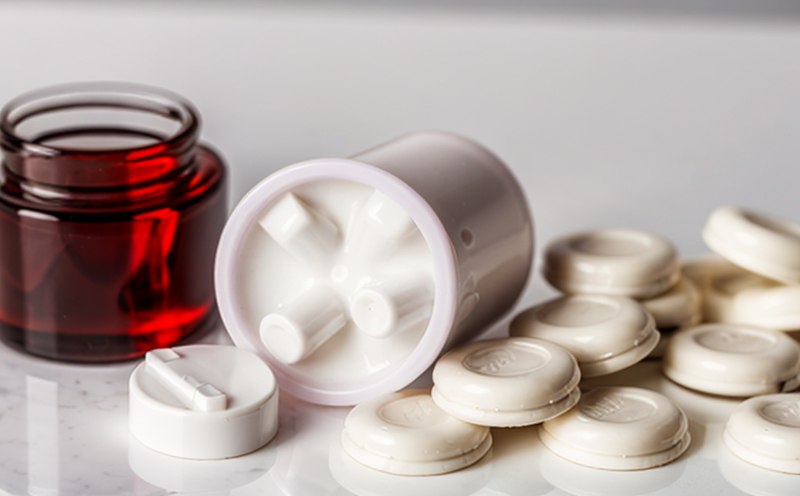USP Capsule API Release Rate Testing
The United States Pharmacopeia (USP) Capsule API release rate testing is a critical quality assurance process used to evaluate the dissolution characteristics of active pharmaceutical ingredients (APIs) within hard gelatin capsules. This test ensures that the APIs are released at an acceptable rate, thus maintaining product efficacy and patient safety. Dissolution tests are essential because they directly impact drug bioavailability, which can vary significantly depending on factors such as formulation, manufacturing process, and storage conditions.
During this testing procedure, API powders are encapsulated into hard gelatin capsules under controlled conditions. The test simulates in vivo gastrointestinal conditions to determine the rate at which the active ingredient is released from the capsule matrix. Various parameters influence the release profile, including particle size distribution, coating thickness, and the specific formulation used.
The USP guidelines provide detailed protocols for conducting such tests using various methodologies like basket (USP Apparatus 2), paddle (USP Apparatus 21), or flow-through cells. These methods ensure uniform mixing of the API within the capsule shell to prevent localized high concentrations that could lead to inconsistent dissolution rates.
The test involves placing a specified quantity of capsules into a dissolution medium, typically buffered saline solution at physiological pH levels. The sample is agitated or rotated according to predefined conditions until complete dissolution occurs. At predetermined intervals during the experiment, samples are withdrawn and analyzed for API content using analytical techniques such as high-performance liquid chromatography (HPLC), ultraviolet-visible spectrophotometry (UV-Vis), or near-infrared spectroscopy (NIR).
The data collected from these analyses is plotted against time to generate a dissolution profile. Compliance with USP standards requires that the API should be released within specific timeframes, which vary depending upon the API and its intended use.
| Time Point (min) | Dissolution Target (%) |
|---|---|
| 30 min | >85% |
| 60 min | >95% |
The above table illustrates the typical dissolution targets specified by USP for most oral solid dosage forms. However, specific limits may differ based on individual APIs and their therapeutic indications.
This testing procedure is crucial not only during product development but also in routine quality control checks to ensure consistency across batches produced under different manufacturing conditions or at various facilities.
Scope and Methodology
- Sample Preparation: Hard gelatin capsules containing the API are prepared according to the client's specifications. The exact composition of each capsule, including excipients and coating materials, is carefully documented.
- Dissolution Medium: Dissolution studies are conducted in phosphate buffer pH 6.8 as per USP guidelines.
- Analytical Techniques: High-performance liquid chromatography (HPLC) equipped with a diode array detector is employed for quantification of the API.
The dissolution profile obtained from this test helps in assessing the overall quality and performance of the capsule formulation. It ensures that the drug product meets the required therapeutic effect by releasing the active ingredient efficiently within acceptable time frames.
International Acceptance and Recognition
- The USP Capsule API release rate test is widely accepted across Europe, Asia, and North America. Many regulatory bodies like the European Medicines Agency (EMA), Health Canada, and the Pharmaceuticals and Medical Devices Agency in Japan accept compliance with USP standards.
- It is a key requirement for pharmaceutical products seeking approval from various global markets.
- The use of standardized dissolution tests ensures uniformity in quality assessment worldwide, facilitating smoother international trade.
Besides regulatory bodies, leading pharma companies incorporate this testing into their internal QA protocols to maintain consistent product quality standards across all manufacturing sites.
Use Cases and Application Examples
The USP Capsule API release rate test has several practical applications:
- New Drug Development: During the early stages of drug development, this testing helps identify potential issues related to formulation design.
- Process Validation: It is used to validate manufacturing processes and ensure they consistently produce high-quality products.
- Batch Release Testing: This test verifies that each batch meets quality specifications before being released for sale or distribution.
- Compliance Audits: Regulatory agencies often request proof of compliance with USP standards during inspections to verify adherence to good manufacturing practices (GMP).
In addition, this testing plays a vital role in ensuring patient safety by confirming that the drug will behave as expected when taken orally. This reduces risks associated with suboptimal treatment outcomes or adverse reactions.





